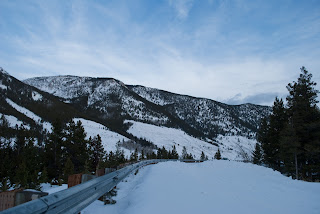"National Audubon Society Guide To Digital Nature Photography"
Part One: The Right Equipment
Part one of the "National Audubon Society Guide To Digital Nature Photography," by Tim Fitzharris, describes the basic information needed in moving toward being a professional nature photographer. He has good examples and feedback that are very helpful in making me a better photographer. I learned some extremely beneficial information about what kind of equipment I should posses, why that equipment is important, tips in the field and where I should go to have good photo taking opportunities.
The first chapter explains why the digital (SLR) cameras are beneficial in producing professional quality photos and also have many other benefits that are superior to other cameras. Digital photos are easily managed and last essentially forever, assuming that you don't lose them. For nature photography, their speed and accuracy is essential in getting good shots of moving subjects. Fitzharris also describes a few good tips on what type of camera bodies to buy, giving examples of different specifications you may want depending on your intent. He also explains that, depending on your subject, you will need different lenses to get the best picture possible. For example, if you want to shoot close up shots of bugs, a macro lens would be the best lens to use.
In the next two chapters, Fitzharris does a good job describe two other important types of equipment; tripods and super-telephoto lenses. In the section on tripods, he explains the significance and importance of using a tripod to produce quality photos, suggesting its almost as important as the camera itself. He gives tips on which types of heads to use, whether it be the gimbal type (which works well with the super-telephoto lens) or a basic type, such as the ball and socket head. He also explains that when purchasing a tripod you should keep in mind that the lighter the tripod the better and make sure it is tall enough and fits you and your needs.
The chapter on super-telephoto lenses was a section that taught me a lot about the importance of focal length in nature photography. In nature, there can be dangers or rules about being too close to certain subjects. Super-telephoto lenses are desirable because you can take quality photos with out being too close. When buying super-telephoto lenses, make sure you get one that is weatherproof, with vibration reduction and an auto focus to manual switch, which are all helpful when trying to get quality shots.
The next chapter focuses on important knowledge about working in the field. He emphasizes how important it is to have the right gear when working in the field so that you're able to be as efficient as possible. For example, a professional camera vest with quick release flaps and pockets are helpful in order to change your equipment quickly in order to capture shots. Having a vest would be very helpful for me because I struggle having to carry my extra lens and gear in my pockets. He stresses that we need to be prepared for any situation or photo opportunity that arises. A few things you may want to bring while in the field are duct tape, for a quick fix; reflectors, to change lighting; a plastic bag to cover your camera in case of rain; and a cell phone. The following chapter was similar, but was focused on working in the field in a cold, winter setting. It talks about everything a Montana boy knows about clothing and what to wear to keep warm. Layers! One useful thing I learned was to keep extra batteries and to keep them warm, since they diminish in the cold.
The last chapter of this section describes where to go during specific times of the year for great photo opportunities. It talks about some very obvious places, like North America's National Parks and the Grand Canyon, but it gave a good explanation of why certain times of the year are better for lighting, color, and subject matter. The one that I wanted to go to was Maui, Hawaii in December because it sounded like a incredible place to visit to take photographs.





























